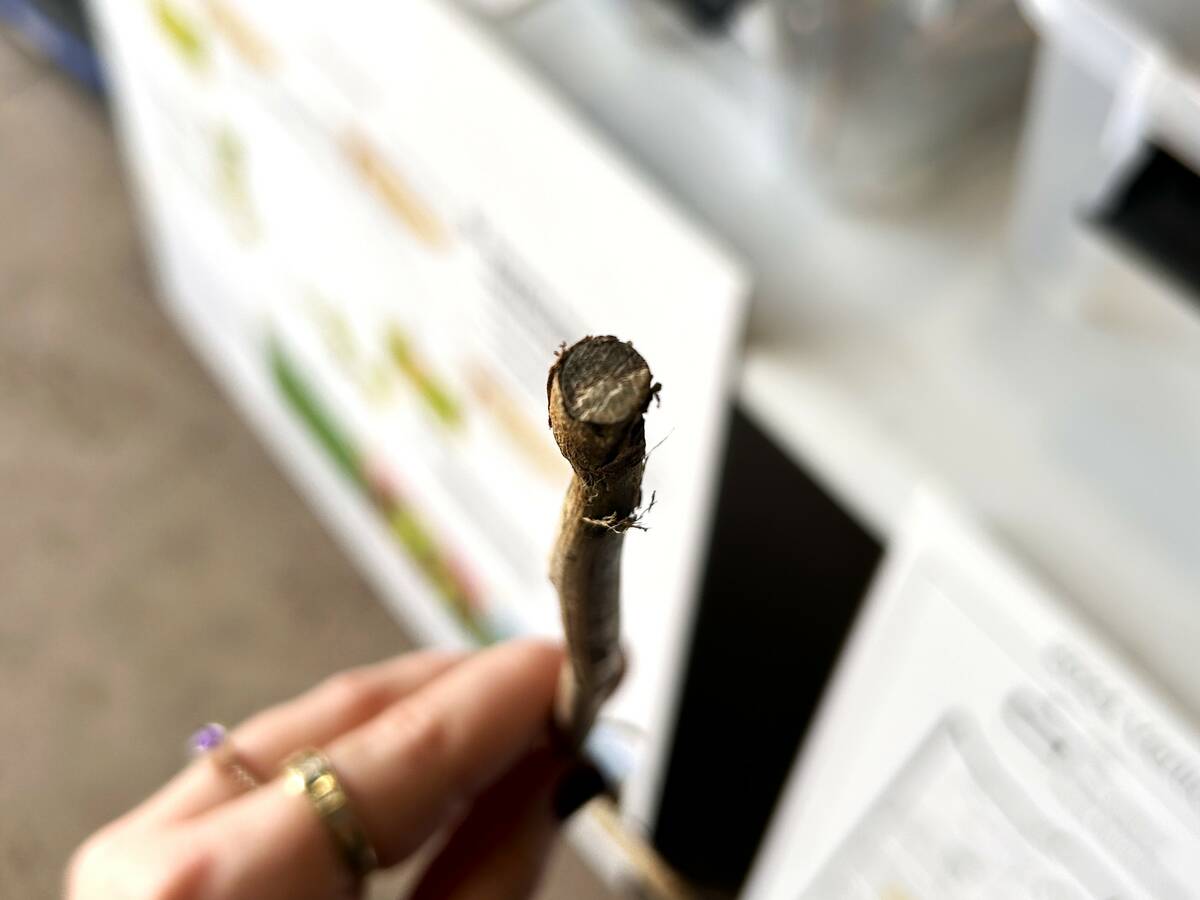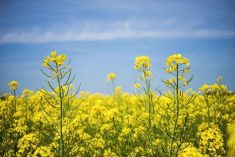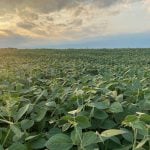Canola growers can evaluate levels of sclerotinia in their fields when it’s time to swath the crop and the Canola Council of Canada says that’s the ideal time to scout.
Why it matters: A wet start to Manitoba’s growing season raised the risk profile for fungal diseases like sclerotinia and more producers applied fungicide.
Sclerotinia is typically one of the top canola diseases on the Prairies, although disease surveys found few infections in Manitoba last year. Early rainfall in 2024, with May and June posting well above average moisture, sparked concerns that the disease would return with a vengeance.
Read Also

Manitoba canola embattled by verticillium
Verticillium stripe pressure has been growing in Manitoba, and canola farmers still have precious few tools to protect their crop from the disease.
“It produces acids and all kinds of aggressive proteins that basically just go through the plant stem,” said Clinton Jurke, agronomy director with the canola council.
Those compounds eat away at plant cells. If it gets into the main stem and weather conditions include good moisture and relatively high humidity, the fungus prospers. The result is familiar to most producers: bleached, thin and brittle stems that shatter or shred easily when twisted and are spotted with black fungus.
“There’s nothing else that does that,” Jurke noted.
Scale of the problem
Infections on the main stem and branches have the highest impact on yield, according to the council.
When assessing sclerotinia stem rot levels, farmers are urged to look at a representative sample of plants throughout the field. The council suggests at least four to six sites per quarter section. At each site, 50 to 100 plants should be assessed.
Despite widespread worries, Jurke said it’s too early to predict infection levels.
“We expect sclerotinia numbers will be higher this year than what we’ve seen in the past few years, particularly in Saskatchewan and Manitoba,” he said, pointing to the higher precipitation in those provinces.
“Whenever the yield potential for canola is high, then the risk for sclerotinia is high. Usually that means there’s been good moisture.”
Managing sclerotinia is a prevention game. Fungicide is the best and most common solution touted by industry, but a farmer must forecast the risk of disease and apply the pesticide at the start of the infection cycle. There are a few varieties on the market with moderate levels of resistance, Jurke noted, but few farmers use them.
Back to blackleg
If there’s canola in Western Canada, there’s usually blackleg too.
“I guess it has been increasing over the past 10 years and gets a little bit worse every year. In Alberta, there’s been some pretty high levels of blackleg in the last couple of years,” Jurke said.
It is also one of the most common canola diseases in Manitoba. Last year’s provincial canola disease survey found blackleg in 86 per cent of surveyed fields, within which about 11 per cent of plants were infected.
Blackleg is not as dependent on weather conditions. It needs some moisture at the start of the season, but infection depends more on whether the pathogen can evade a plant’s built-in resistance, the canola council said.
It has been at the heart of a genetics arms race in recent decades after the pathogen began circumventing established resistant varieties on the market. Farmers and breeders have scrambled to stay ahead.
The fungus infects plants early in the season, at the cotyledon, one-leaf or two-leaf stage. It then travels through the plant to the base of the stem and top of the root, where it begins eating tissue. Producers will see cankering in the basal part of the stem. More cankers mean more yield loss.
Dry conditions near the end of the season, when the crop starts to dry, often result in worse cankers.
Despite the ongoing resistance fight, blackleg management remains largely about genetics and whether local blackleg races surpass chosen varietal resistance. There are tests to identify the blackleg race involved, but few growers opt for them.
Tight canola rotations also increase severity of blackleg.
“You need two years out of canola for the old canola residue to completely break down. Once that’s gone from the field, the pathogen is gone from the field,” Jurke said.
There are also new seed treatments that protect against blackleg infection. They promise protection up to the three- or four-leaf stage, dodging the plant’s most vulnerable window, but have yet to be commonly adopted.
Jurke also suggested that farmers send samples to a lab to determine if they’re dealing with blackleg or a newer problem on the Prairies: verticillium stripe.
The council singled out that disease threat earlier this year. A field can be infected with more than one of the canola fungal disease trifecta (sclerotinia, blackleg, verticillium) at the same time. If it is verticillium, producers will be wasting their money on fungicide or soil treatments and there are no resistant varieties yet.
















